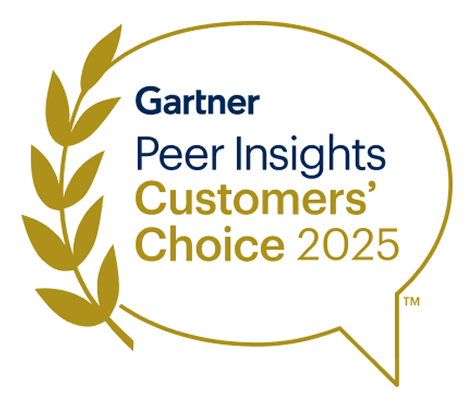Top Advantages and Benefits of DSPM
Addressing data protection in today’s data estates requires innovative solutions. Data in modern environments moves quickly, as countless employees in a given organization can copy, move, or modify sensitive data within seconds. In addition, many organizations operate across a variety of on premises environments, along with multiple cloud service providers and technologies like PaaS and IaaS. Data quickly sprawls across this multifaceted estate as team members perform daily tasks.
Data Security Posture Management (DSPM) is a key technology that meets these challenges by discovering and classifying sensitive data and then protecting it wherever it goes. DSPM helps organizations mitigate risks and maintain compliance across a complex data landscape by focusing on the continuous discovery and monitoring of sensitive information.
If you're not familiar with DSPM, you can check out our comprehensive DSPM guide to get up to speed. But for now, let's delve into why DSPM is becoming indispensable for modern cloud enterprises.
Why is DSPM Important?
DSPM is an innovative cybersecurity approach designed to safeguard and monitor sensitive data as it traverses different environments. This technology focuses on the discovery of sensitive data across the entire data estate, including cloud platforms such as SaaS, IaaS, and PaaS, as well as on-premises systems. DSPM assesses exposure risks, identifies who has access to company data, classifies how data is used, ensures compliance with regulatory requirements like GDPR, PCI-DSS, and HIPAA, and continuously monitors data for emerging threats.
As organizations scale up their data estate and add multiple cloud environments, on-prem databases, and third-party SaaS applications, DSPM also helps them automate key data security practices and keep pace with this rapid scaling. For instance, DSPM offers automated data tags that help businesses better understand the deeper context behind their most valuable assets — regardless of location within the data estate. It leverages integrations with other security tools (DLP, CNAPP, etc.) to collect this valuable data context, allowing teams to confidently remediate the security issues that matter most to the business.
What are the Benefits of DSPM?
DSPM empowers all security stakeholders to monitor data flow, access, and security status, preventing risks associated with data duplication or movement in various cloud environments. It simplifies robust data protection, making it a vital asset for modern cloud-based data management.
Now, you might be wondering, why do we need another acronym?
Let's explore the top five benefits of implementing DSPM:
1) Sharpen Visibility When Identifying Data Risk
DSPM enables you to continuously analyze your security posture and automate risk assessment across your entire landscape. It can detect data concerns across all cloud-native and unmanaged databases, data warehouses, data lakes, data pipelines, and metadata catalogs. By automatically discovering and classifying sensitive data, DSPM helps teams prioritize actions based on each asset’s sensitivity and relationship to policy guidelines.
Automating the data discovery and classification process takes a fraction of the time and effort it would take to manually catalog all sensitive data. It’s also far more accurate, especially when using a DSPM solution that leverages LLMs to classify data with more granularity and rich meta-data. In addition, it ensures that you stay up-to-date with the frequent changes in your modern data landscape.
2) Strengthen Adherence with Security & Compliance Requirements
DSPM can also automate the process of identifying regulatory violations and ensuring adherence to custom and pre-built policies (including policies that map to common compliance frameworks). By contrast, manually implementing policies is prone to errors and inaccuracies. It’s common for teams to misconfigure policies that either overalert and inhibit daily work or miss significant user activities and changes to access permissions.
Instead, DSPM offers policies that travel with your data and automatically reveal compliance gaps. It ensures that sensitive data stays within the correct environments and doesn’t travel to regions with retention policies or without data encryption.
3) Improve Data Access Governance
Many DSPM solutions also offer data access governance (DAG). This functionality enforces the appropriate access permissions for all user identities, third parties, and applications within your organization. DAG automatically ensures that the proper controls follow your data, mitigating risks such as excessive permission, unauthorized access, inactive or unused identities and API keys, and improper provisioning/deprovisioning for services and users.
By using DSPM to govern data access, teams can successfully achieve the least privilege within an ever-changing and growing data ecosystem.
4) Minimize your Data Attack Surface
DSPM also enables teams to detect unmanaged sensitive data, including mislocated, shadow, or duplicate assets. Its powerful data detection capabilities ensure that sensitive data, such as historical assets stored within legacy apps, development test data, or information within shadow IT apps, don’t go unnoticed in a lower environment. By automatically finding and classifying these unknown assets, DSPM minimizes your data attack surface, controls data sprawl, and better protects your most valuable assets from breaches and leaks.
5) Protect Data Used by LLMs
DSPM also extends to LLM applications, enabling you to maintain a strong risk posture as your team adopts new technologies. It considers LLMs as part of the data attack surface, applying the same DAG and data discovery/classification capabilities to any training data leveraged within these applications.
By including LLMs in your overarching data security approach, DSPM alleviates any GenAI data privacy concerns and sets up your organization for future success as these technologies continue to evolve.
Enhance Your DSPM Strategy with Sentra
Sentra offers an AI-powered DSPM platform that moves at the speed of data, enabling you to strengthen your data risk posture across your entire hybrid ecosystem. Our platform can identify and mitigate data risks and threats with deep context, map identities to permissions, prevent exfiltration with a modern DLP, and maintain a rich data catalog with details on both known and unknown data.
In addition, our platform runs autonomously and only requires minimal administrative support. It also adds a layer of security by discovering and intelligently categorizing all data with removing it from your environment.
Conclusion
DSPM is quickly becoming an essential tool for modern cloud enterprises, offering comprehensive benefits to the complex challenges of data protection. By focusing on discovering and monitoring sensitive information, DSPM helps organizations mitigate risks and maintain compliance across various environments, including cloud and on-premises systems.
The rise of DSPM in the past few years highlights its importance in enhancing security. It allows security teams to monitor data flow, access, and status, effectively preventing data duplication or movement risks. With advanced threat detection, improved compliance and governance, detailed access control, rapid incident response, and seamless integration with cloud services, DSPM provides significant benefits and advantages over other data security solutions. Implementing DSPM is a strategic move for organizations aiming to fortify their data protection strategies in today's digital landscape.
To learn more about DSPM, request a demo today.
<blogcta-big>









.webp)

.webp)

